Isometric Exercises For Seniors To Improve Balance & Stability provide a low-impact, highly effective way to enhance overall physical well-being. By holding specific positions, these exercises engage the muscles without requiring intense movement, making them ideal for older adults looking to improve strength and mobility safely. As aging often challenges coordination and balance, isometric exercises offer a gentle yet powerful solution to maintaining physical independence.
Incorporating these exercises into a daily routine can significantly reduce the risk of falls while building muscle endurance. Whether done at home or with minimal equipment, isometric exercises are an accessible and practical option for seniors who want to stay active. Ready to learn how these exercises can strengthen your body and boost your confidence? Let’s dive into the benefits and techniques that make them essential for senior fitness.
Isometric Exercises for Seniors to Improve Balance & Stability: Simple Moves for a Steadier You

As we get older, staying steady on our feet becomes more important. Luckily, there are simple exercises that can help. Isometric exercises offer several advantages for older adults, including improved strength and better balance. These exercises don’t require much movement, making them safe and easy to do at home. Regular practice of isometric exercises can help maintain and even increase muscle strength in seniors.
This added strength can make daily tasks easier and reduce the risk of falls. Many of these exercises work your core muscles, which are key for good balance. You don’t need fancy equipment or a gym membership to get started. Many isometric exercises can be done using your body weight or simple items at home. You can boost your balance and feel more confident with a little time and effort.
Key Takeaways
- Isometric exercises can improve balance and strength in older adults.
- These exercises are safe, easy to do at home, and require little to no equipment.
- Regular practice can make daily tasks easier and help prevent falls.
Understanding Balance and Stability in Aging
As you get older, your balance and stability can start to change. This happens for a few reasons. Your muscles may get weaker, and your joints might become stiffer. Incorporating Isometric Exercises For Seniors To Improve Balance & Stability can help address these changes effectively. Your eyes, inner ears, and the feeling in your feet all work together to keep you steady, but these senses may not work as well as you age. Balance exercises, like isometric movements, focus on your coordination and help your body stay strong and upright.
Good balance is key for many daily tasks. It helps you walk, climb stairs, and even get dressed. By working on your balance, you can keep doing these things easily. Falls are a big worry for older adults. One in four adults over 65 falls each year. But don’t worry! You can lower your risk by staying active and working on your balance. Here are some signs your balance might need work:
- You feel unsteady when walking.
- It would help if you held onto things to move around.
- You’ve had a fall in the past year.
Benefits of Isometric Exercises for Seniors
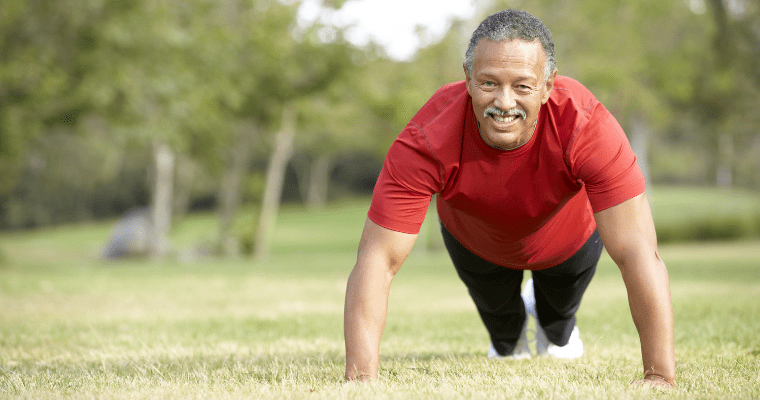
Isometric exercises for seniors to improve balance & stability can be a game-changer for your health as you age. These exercises involve holding a position without moving, which builds strength and stability.
Gentle on Joints
One big plus is that isometric exercises are gentle on your joints. This makes them great if you have arthritis or joint pain. You’ll also see improvements in your muscle strength. Regular practice helps maintain and even boost your muscle power. This is key for staying independent as you get older.
Balance and Bone Health
Balance is another area where you’ll notice gains. Many isometric moves work your core, which is crucial for stability. Better balance means fewer falls and more confidence in your daily activities. Isometric exercises can also help with bone health. This is especially important if you’re at risk for osteoporosis. Here are some quick benefits at a glance:
- Easy on joints.
- Improves strength.
- Enhances balance.
- Supports bone health.
- It can be done anywhere.
You don’t need fancy equipment for these exercises. This makes them perfect for home workouts or when you’re traveling. Remember, consistency is key. Even a few minutes of isometric exercises each day can improve your overall health and well-being.
Essential Safety Tips Before Starting Isometric Exercises
Safety is key when starting any new exercise routine. Taking proper precautions will help you get the most benefit from isometric exercises for seniors to improve balance & stability while avoiding injury.
Consulting with Healthcare Providers
Talk to your doctor before beginning isometric exercises. This is especially important if you have any health conditions or take medications. Your doctor can advise if these exercises are right for you. Ask about any movements you should avoid. Some health issues may limit certain exercises.
Your doctor may suggest modifications to make the exercises safer for you. Discuss your fitness goals with your healthcare provider. They can help create a plan that fits your needs and abilities. This personalized approach increases your chances of success.
Creating a Safe Workout Environment
Choose a sturdy chair or stable surface for support during exercises. Make sure it won’t slip or tip over. Remove any tripping hazards like loose rugs or cords from your workout area. Wear comfortable, non-slip shoes to prevent falls. Loose-fitting clothes allow for easy movement. Keep water nearby to stay hydrated during your workout.
Use proper lighting so you can see clearly. Good lighting helps prevent accidents. If possible, exercise near a wall for extra support if needed. Start slowly and listen to your body. Don’t push yourself too hard too fast. Stop if you feel pain or discomfort. Remember, slow and steady progress is the goal.
Did you Know?
You can easily add isometric exercises to your daily routine. These simple yet effective movements can help improve your balance and strength without wasting time or effort. TV time can be exercise time, too. During commercial breaks, try some quick isometric exercises. Stand up and do a wall sit. Lean against the wall, sliding down until your legs form a 90-degree angle. Hold this position for 30 seconds or until the show resumes.
Fundamental Isometric Exercises for Balance

Isometric exercises for seniors to improve balance & stability can be highly effective. These exercises work by holding a position without moving, strengthening muscles and enhancing body awareness.
Isometric Wall Push
The wall push is a simple yet effective exercise for seniors. Stand about an arm’s length from a wall. Place your hands flat against the wall at shoulder height. Lean in, pushing against the wall with your hands. Keep your body straight and your feet flat on the floor. Hold this position for 10-30 seconds, depending on your strength.
You should feel tension in your arms, shoulders, and core. This exercise helps improve upper body strength, which is important for balance. Try to do 3-5 repetitions, resting for a few seconds between each. Stop the exercise and consult your doctor if you feel any pain or discomfort.
Plantar Flexion Stand
This exercise targets your calf muscles, which play a key role in balance. Stand behind a chair, holding onto the back for support. Slowly rise up onto your toes, lifting your heels off the ground. Hold this position for 5-10 seconds.
You should feel your calf muscles working. Slowly lower your heels back to the ground. This exercise strengthens the muscles that help with balance. Try to do 10-15 repetitions. As you get stronger, you can hold the position for longer. Always keep a firm grip on the chair for safety.
Chair Sit and Hold
The chair sit-and-hold exercise strengthens your leg and core muscles. Start by sitting in a sturdy chair with your feet flat on the floor. Slowly stand up, using your legs and not your arms. When you’re almost fully standing, pause and hold the position for 5-10 seconds.
Slowly sit back down, but stop just before you touch the chair. Hold this position for another 5-10 seconds. This exercise improves leg strength and stability. It’s like doing a partial squat. Try to do 5-10 repetitions. If you feel unsteady, keep the chair close by for support.
Isometric Exercises for Core Stability
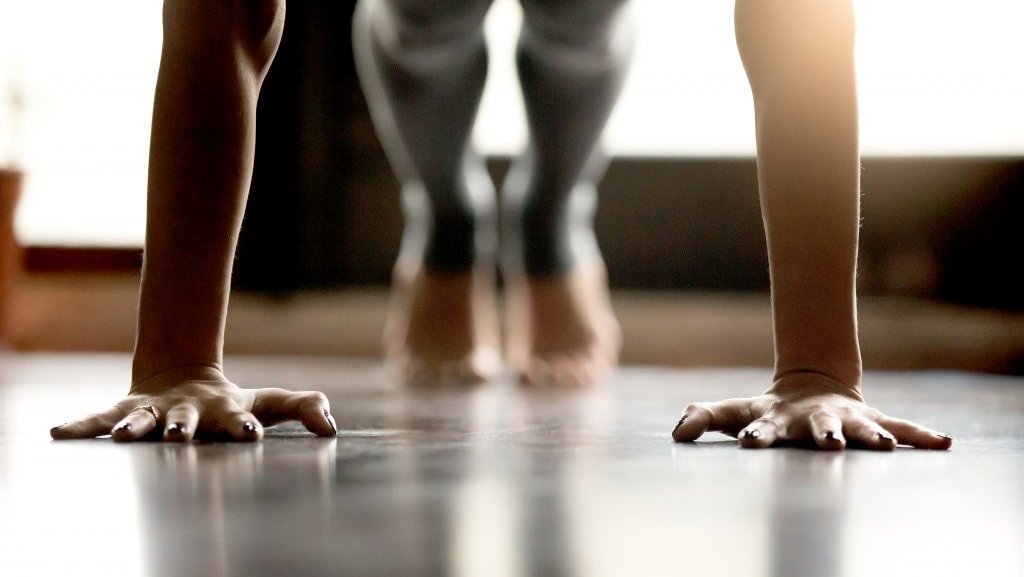
Isometric exercises for seniors to improve balance & stability can help strengthen the core without putting stress on joints. These simple moves focus on engaging and holding muscle contractions to boost stability and balance.
Seated Knee Press
The seated knee press is an easy core exercise for seniors. Sit in a chair with your feet flat on the floor. Place your hands on the sides of your knees. Push your hands against your knees while resisting with your legs. Hold this position for 5-10 seconds. Relax and repeat 5-10 times. This exercise strengthens your core and leg muscles. It’s gentle on your joints and can be done anywhere you have a chair.
Abdominal Squeeze
The abdominal squeeze is a simple yet effective isometric core exercise. Sit or stand tall with good posture. Take a deep breath and tighten your stomach muscles. Imagine you’re pulling your belly button toward your spine.
Hold this contraction for 5-10 seconds while breathing normally. Relax and repeat 10-15 times. This exercise helps strengthen your deep abdominal muscles. It improves posture and supports your lower back.
Pelvic Tilt
The pelvic tilt helps strengthen your lower abdominals and improves lower back stability. Lie on your back with your knees bent and feet flat on the floor. Tighten your abdominal muscles and press your lower back into the floor. Hold this position for 5-10 seconds. Relax and repeat 10-15 times. This gentle exercise is great for seniors with lower back pain. It strengthens your core while promoting good spine alignment.
Isometric Exercises For Seniors To Improve Balance & Stability: Building Lower Body Strength
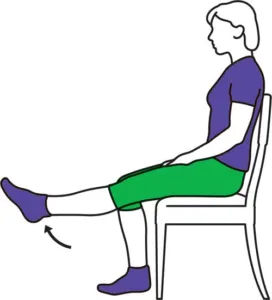
Isometric exercises for seniors can boost your lower body strength and stability. These simple moves target key leg and hip muscles to improve balance and mobility.
Leg Lifts and Holds
Start by sitting in a sturdy chair with your feet flat on the floor. Slowly lift your right foot off the ground until your leg is straight. Hold this position for 10-15 seconds to keep your thigh muscles tight. Lower your leg and repeat with the left leg.
Try to do 5-10 reps on each side. As you get stronger, increase the hold time or add ankle weights for an extra challenge. This exercise strengthens your quadriceps and improves knee stability. It’s great for building the muscles to stand up from a seated position.
Hip Abduction Side Hold
Stand behind a chair, holding onto it for support. Lift your right leg out to the side, keeping it straight. Hold this position for 10-15 seconds, then slowly lower it. Repeat 5-10 times, then switch to the left leg. Keep your upper body straight and avoid leaning to one side. This move targets your hip and outer thigh muscles. It helps improve side-to-side stability, which is crucial for preventing falls.
Toe Curl and Hold
Sit in a chair with your feet flat on the floor. Slowly curl your toes downward as if you’re trying to grab the floor with them. Hold this position for 5-10 seconds, then release. Do 10-15 reps, focusing on fully curling and uncurling your toes each time.
You can add difficulty by placing a towel under your feet and trying to scrunch it up. This exercise strengthens the small muscles in your feet and toes. It improves your grip on the ground, enhancing overall balance and stability when walking or standing.
Upper Body Strengthening Through Isometrics
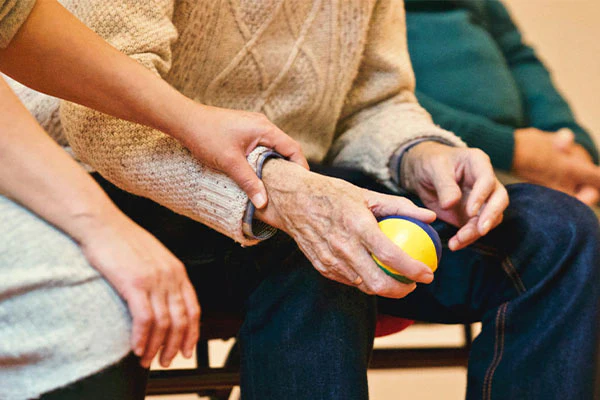
Isometric exercises for seniors to improve balance & stability can help you build upper body strength without putting stress on your joints. These exercises involve holding static positions to engage your muscles. They’re great for seniors looking to improve arm and shoulder strength.
Isometric Shoulder Raise
The isometric shoulder raise targets your deltoid muscles. Stand with your back against a wall. Raise your arms to the sides until they’re parallel to the floor. Hold this position for 10-15 seconds. You should feel tension in your shoulders. If it’s too hard, try raising your arms only halfway. Do three sets of 10-15 second holds. Rest for 30 seconds between sets. This exercise helps build shoulder stability. It can improve your ability to reach overhead and carry groceries.
Bicep Isometric Hold
Bicep isometric holds strengthen your upper arms. Sit in a chair with your feet flat on the floor. Hold a light dumbbell in each hand. Bend your elbows to 90 degrees. Keep your upper arms close to your body. Hold this position for 15-20 seconds. You’ll feel your biceps working hard. You can use canned goods or water bottles if you don’t have dumbbells. Do three sets of 15-20 second holds. Take a 30-second break between sets. This exercise can help you lift objects more easily.
Hand Grip Strengthening
Strong hands are key for daily tasks. For this exercise, you’ll need a small ball or rolled-up towel. Sit comfortably in a chair. Hold the ball or towel in one hand. Squeeze it as hard as you can for 5-10 seconds. Relax for a few seconds, then repeat. Do this ten times with each hand. If you don’t have a ball, you can make a fist and press your fingers into your palm. This exercise improves your grip strength. It can help with tasks like opening jars or turning doorknobs.
Tracking Your Progress with Isometric Exercises
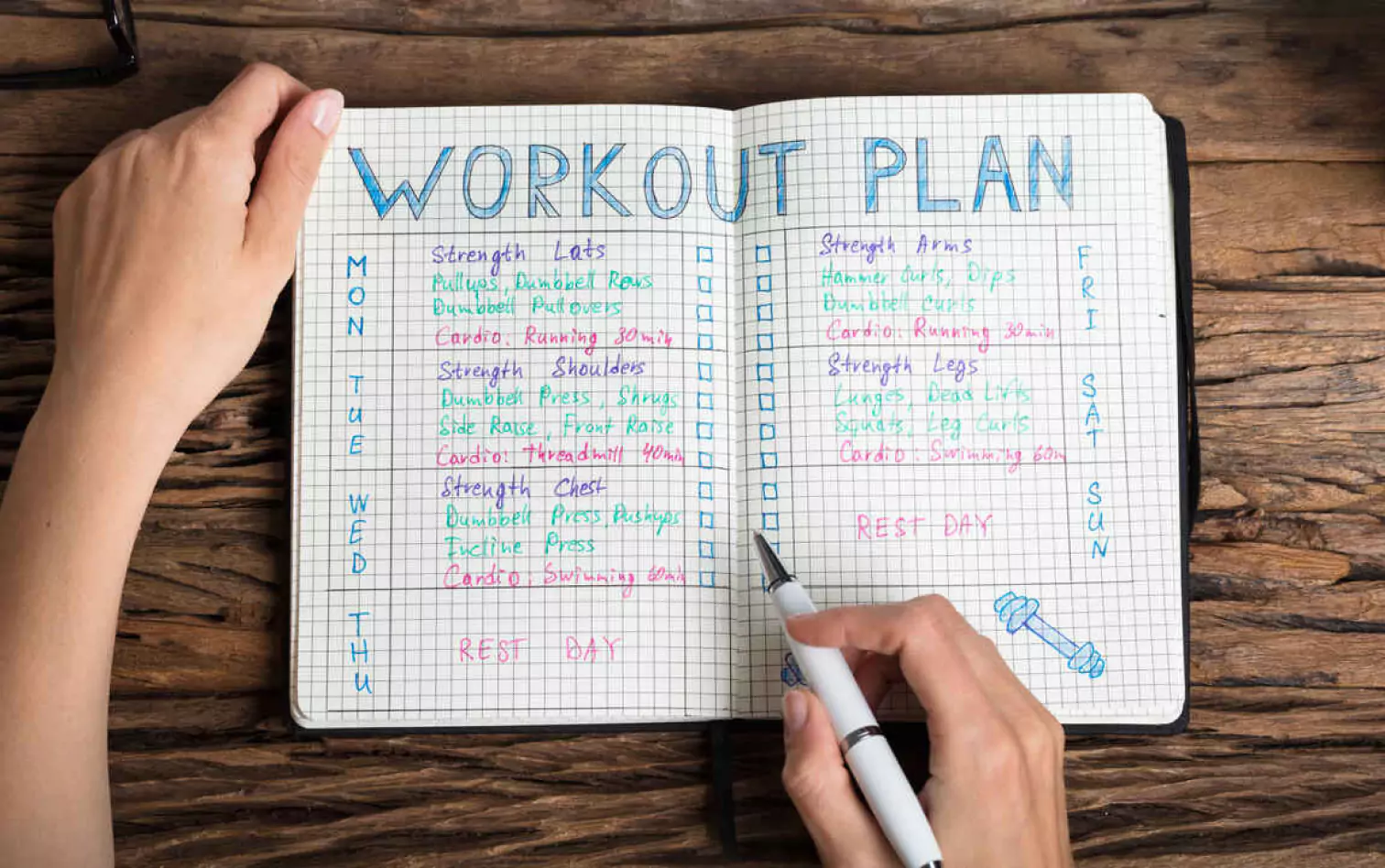
Keeping tabs on your isometric exercise routine, particularly with isometric exercises for seniors to improve balance & stability, helps you stay motivated and see improvements. You can easily monitor your strength gains and balance enhancements with simple tools and goal-setting techniques.
Keeping an Exercise Diary
An exercise diary is a great way to track your isometric workouts. Write down the exercises you do daily, how long you hold each pose, and how many reps you complete. Note any challenges or discomfort you feel. This will help you spot patterns and improvements over time. You can use a notebook or a smartphone app to log your exercises. Include details like:
- Date and time of workout.
- Specific exercises performed.
- Duration of holds.
- Number of repetitions.
- How you felt during and after.
Review your diary weekly to see your progress. You might notice you can hold wall sits longer or do more reps of glute bridges. These small wins can boost your motivation to keep going.
Setting Achievable Goals
Setting realistic goals gives you something to work towards. Start small and gradually increase the difficulty of your isometric exercises. This approach helps prevent injury and keeps you engaged. Here are some tips for setting good isometric exercise goals:
- Be Specific: Instead of “get stronger,” aim for “hold a plank for 30 seconds.”
- Make it Measurable: Use time or reps to track your progress.
- Set a Time Frame: Give yourself a deadline, like “in 4 weeks.”
- Keep it Realistic: Choose goals that challenge you but are within reach.
Try setting both short-term and long-term goals. A short-term goal might be to do isometric exercises three times a week. A long-term goal could be to improve your balance enough to stand on one foot for 60 seconds.
Here’s an additional video featuring more isometric exercises for seniors.
By: Minus The Gym
Strength and Stability: A Path to Better Balance for Seniors
In conclusion, isometric exercises for seniors to improve balance and stability are a practical and beneficial addition to any fitness routine. By focusing on holding specific positions, these exercises enhance muscle strength and promote stability and coordination, essential factors for maintaining independence as one ages. The gentle nature of isometric movements makes them accessible to individuals with varying fitness levels, ensuring everyone can participate safely.
A consistent regimen of isometric exercises can significantly reduce the risk of falls, allowing seniors to engage confidently in daily activities. Moreover, with minimal equipment and the ability to perform many of these exercises at home, older adults can easily incorporate them into their lifestyles. By prioritizing balance and strength through isometric training, seniors can enjoy greater mobility, enhanced physical health, and a higher quality of life. Embracing these exercises can pave the way for a steadier, more confident future.
Frequently Asked Questions
What Are Some Simple Isometric Exercises for Improving Stability in the Elderly?
Wall sits are great for building leg strength. Stand with your back against a wall and slowly slide down until your thighs are parallel to the floor. Hold for 30-60 seconds. Planks strengthen your core. Start on your forearms and toes, keeping your body straight. Hold for 15-30 seconds. Standing marches improve balance. Lift one knee at a time while standing, holding onto a chair if needed.
Which Seated Isometric Exercises Are Recommended for Seniors?
Chair leg lifts are easy and effective. Sit tall and slowly lift one leg straight out in front of you. Hold for 5-10 seconds, then lower and repeat with the other leg. Seated ankle rotations help with foot strength. Lift one foot off the ground and rotate your ankle in circles for 10-15 seconds in each direction.
How Can Balance Exercises Be Safely Practiced at Home by Seniors?
Always have a sturdy chair or countertop nearby for support. Start with simpler exercises and progress slowly. Wear non-slip shoes and clear the area of tripping hazards. Consider having someone with you when trying new exercises.
Revitalize Your Fitness Journey Beyond 55!
Hello, fitness lovers! Discover the secrets to vitality and well-being with Fit After 55! Whether you’re an experienced athlete or just starting out, our platform serves as your comprehensive resource for holistic health. From establishing realistic goals to celebrating achievements, we’re here to assist you in reimagining what it means to thrive after 55. Visit our website and join our Facebook page today to unleash your full potential with Fit After 55!

